|
|
Post by tufta on Oct 17, 2008 15:13:22 GMT 1
Bo, is there a thread 'Polish cemetaries' somewhere already?
And question two - what photographs storing site would you suggest for easiness for upload and large space?
|
|
|
|
Post by Bonobo on Oct 17, 2008 20:49:25 GMT 1
Bo, is there a thread 'Polish cemetaries' somewhere already? And question two - what photographs storing site would you suggest for easiness for upload and large space? The only threads about cemetaries are in All Saints` Day and Warsaw War Memory. Also here: polandsite.proboards.com/thread/4577/jewish-cemetery-warsaw |
|
gigi
Kindergarten kid
  
Posts: 1,470
|
Post by gigi on Feb 26, 2009 0:23:58 GMT 1
Jewish Cemetery Symbolism: The motifs and designs on the headstones in the Jewish Cemetery all have symbolic meanings. Many of them make a reference to Judaism, but there are also others, like birds, fruit bowls, wreaths. There are signs of mourning, like a broken tree or a candle, a herd of cattle without a shepherd or a ship as the word ship in Hebrew also has another meaning, that of moaning in grief. There are also figures of Biblical animals - the lion, the tiger, the stag and of some legendary ones, like the griffin and the leviathan, all of them representing qualities of character that glorify the deceased. As no images of humans are allowed in Judaic art, the human figure has been replaced by the picture of a hand. Two hands in the characteristic gesture of Judaic blessing can be found on graves of rabbis or saintly people. A money-box with a hand can be found on the graves of benefactors. Other symbols refer to the dead person's job or profession. In the photo you can see the grave of the actor Chewel Buzgan (d.1971) with the images of a hand, a mask and a lute:  The Jewish Cemetery, Warsaw The kind of tombstone allows to determine whether the deceased came from a traditional or an 'assimilated' Jewish family. The wealthy assimilated (sometimes also called 'progressive' ) families often erected real monuments of granite or marble to commemorate their dead. So, there are three types of tombstones in the Jewish Cemetery: simple headstones (matzevas), sarcophagi - for important figures of Jewish life, and, finally, the so-called 'ohels' - a kind of stone or wooden 'houses' erected for saintly rabbis. Some of them are real works of art, representing styles popular at that particular time ,e.g., Egyptian, modernist or Empire. 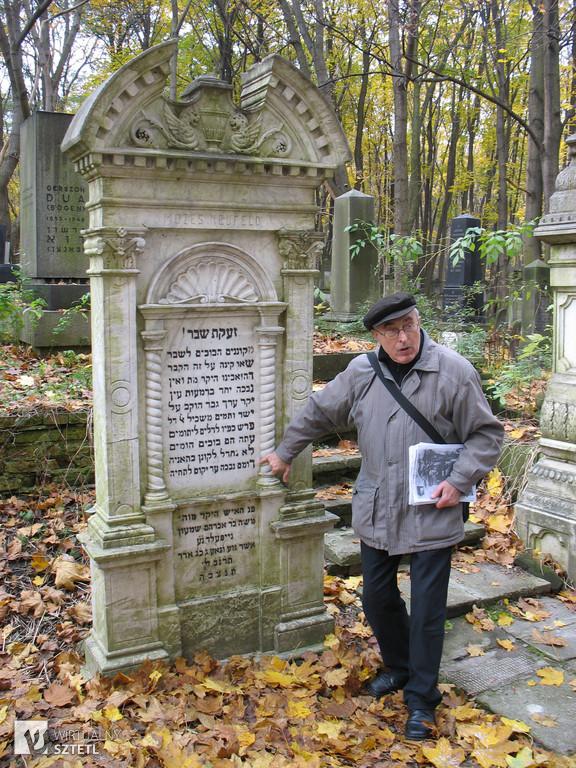 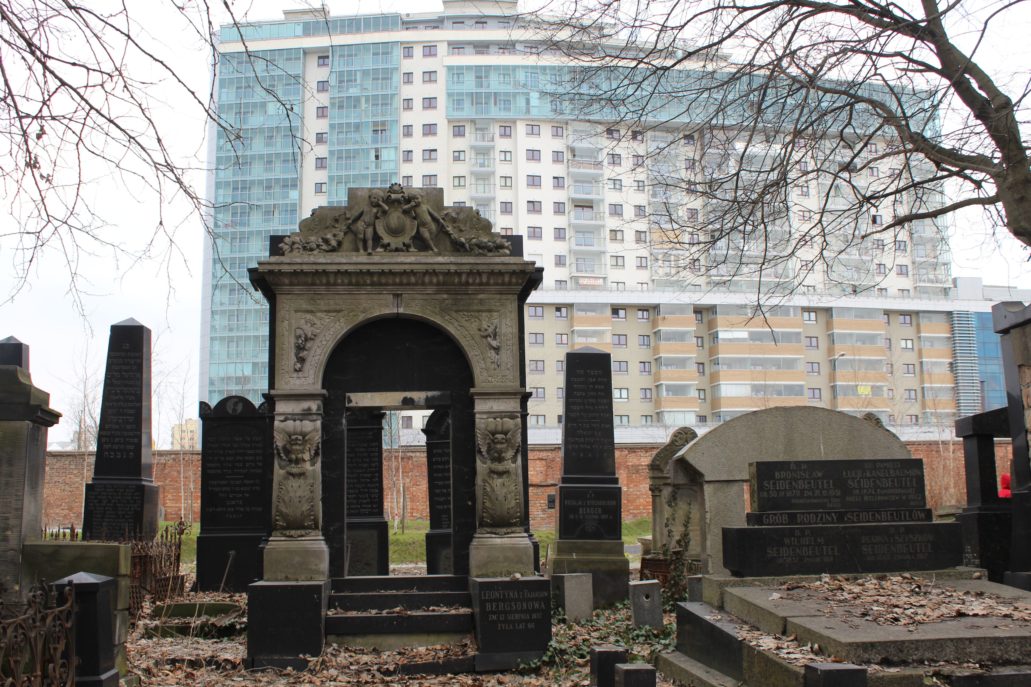 The present Jewish Cemetery was not the first such cemetery to be founded in Warsaw. Already in the Middle Ages there was a Jewish cemetery right beyond the Old Town walls, where Krakowskie Przedmiescie starts nowadays. In the 18th century another Jewish cemetery was founded in Targowek. That cemetery was later largely destroyed by the Nazis, with the headstones used for road construction, in an attempt to erase all Jewish traces from the earth. It still remains a closed area, a ruin overgrown by trees whispering of its past, but the Foundation of the Nissenbaum family, which has now been put in charge of it, has managed to save around 1000 tombs. The cemetery in Okopowa was founded in 1806 and, at first, was to serve only the wealthier Jews, the others still being buried in Targowek. Even so, the number of burials was so large that the old graves had to be replaced with new ones every 50 years. At first, men and women were buried in separate parts of the cemetery. Nowadays this rule is not observed any more. The first headstones (matzevas) were put there to mark the location of the grave to prevent Jewish 'priests', who had to protect their purity, from stepping on impure ground - that of a grave. The inscriptions on the headstones had to be in Hebrew until 1858, when Polish, Russian or German ones could be added to the Hebrew. virtualtourist.com |
|
|
|
Post by tufta on Feb 26, 2009 9:05:20 GMT 1
Gigi, you're so impatient ;D I'll be in a Jewish cementary in April...
|
|
gigi
Kindergarten kid
  
Posts: 1,470
|
Post by gigi on Feb 26, 2009 14:55:16 GMT 1
...you're so impatient ;D Hmm....Tufta, you are beginning to sound like someone else in this forum! ;D I'll be in a Jewish cementary in April... So we can expect some more of your photos in April? I can be patient for those - they will surely be worth the wait!  |
|
|
|
Post by Bonobo on Mar 22, 2020 15:28:07 GMT 1
Jewish cemetery in Łódź en.wikipedia.org/wiki/Jewish_Cemetery,_%C5%81%C3%B3d%C5%BA The Łódź Jewish Cemetery, also known as the New Jewish Cemetery, was once the largest Jewish cemetery in Poland and one of the largest in the world. Located in the city of Łódź on Bracka Street,[2] the necropolis was opened in 1892[3] and occupies around 44 hectares of land. The cemetery contains from 180,000 to 230,000[4] marked graves, as well as mass graves of victims of the Litzmannstadt Ghetto and the Holocaust. From 1893 to 1896, the basic construction of the necropolis was completed under the supervision of well-known architect Adolf Zeligson.[5][6]
The circular access is provided by the gate from the southern side on the axis of Abram Cukier Street, which is an extension Chryzantem Street. Pedestrian access is possible from the east through a gate in the wall stretching along Zmienna Street. The composition of the foundation is based on the arrangement of two mutually perpendicular axes. The first one leads from the main gate to the square in front of the pre-funeral house. Alongside it, there were once buildings associated with the functioning of the necropolis, in addition to the pre-burial house, this complex included a synagogue, a residential house for cemetery service, a water tower, a mikveh and other minor construction facilities.
Today over a hundred of historical gravesites have been declared historical monuments and are in various stages of restoration. The mausoleum of Izrael Poznański is perhaps the largest Jewish tombstone in the world and the only one containing decorative mosaic.
The cemetery continues to function as a Jewish burial site.[5]
Contents
1 History
2 Gallery
3 See also
4 References
5 External links
History
The cemetery was established on Bracka and Zmienna Streets and following its creation in 1892, it was the largest Jewish necropolis in the Europe.[6] The decision was made to established a Jewish gravesite when residents of the surrounding neighbourhoods refused to allow the expansion of the old cemetery on Wesoła Street,[7] which contained over 3,000 graves.[8] An influential industrialist and factory owner Izrael Poznański donated the first 10.5 hectares of land towards the cemetery's establishment. The outbreak of a cholera epidemic in 1892 forced the Tsarist authorities of Congress Poland to accept the construction. Thus, the first people buried there in the winter of 1892 were approximately 700 cholera victims.[5] In 1893, an estimated 1,139 men and women were buried at the new cemetery.
The Beit Tahara (Funeral Home) was funded by Mina Dobrzyńska Konsztat in 1896 and completed in 1898. In 1900, Albert Cukier purchased additional acres of land and greatly expanded the necropolis. During this time, several houses for cemetery workers and a wooden synagogue were built. World War I brought severe destruction and many tombstones were badly damaged. Its renovation was supported financially by city's industrialists. By 1925, the original wooden fence surrounding the cemetery's borders was replaced by a red brick wall that still stands to this day. All tombstones in the cemetery face east and in the 19th century the majority of them were painted in different colours.   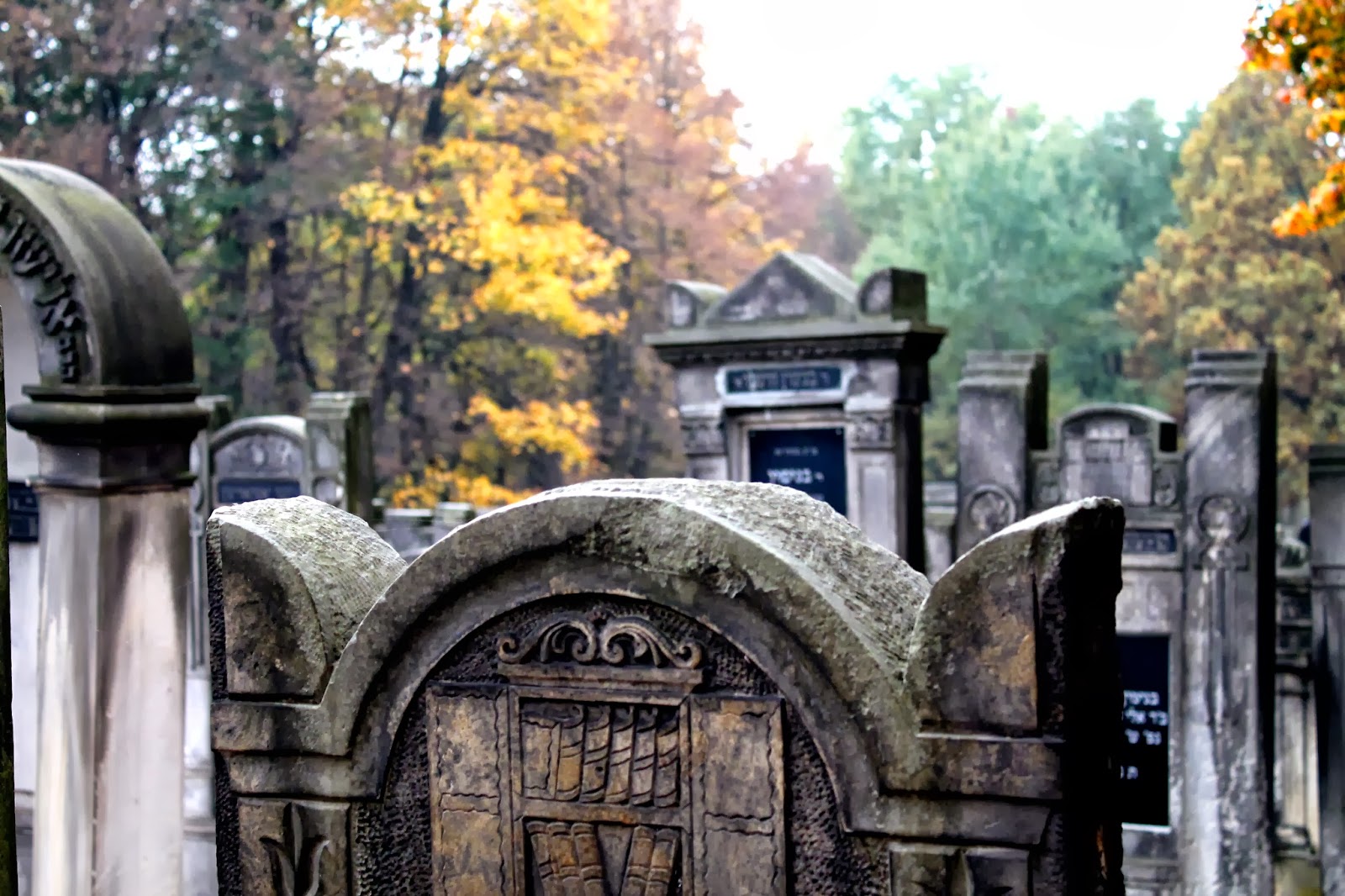  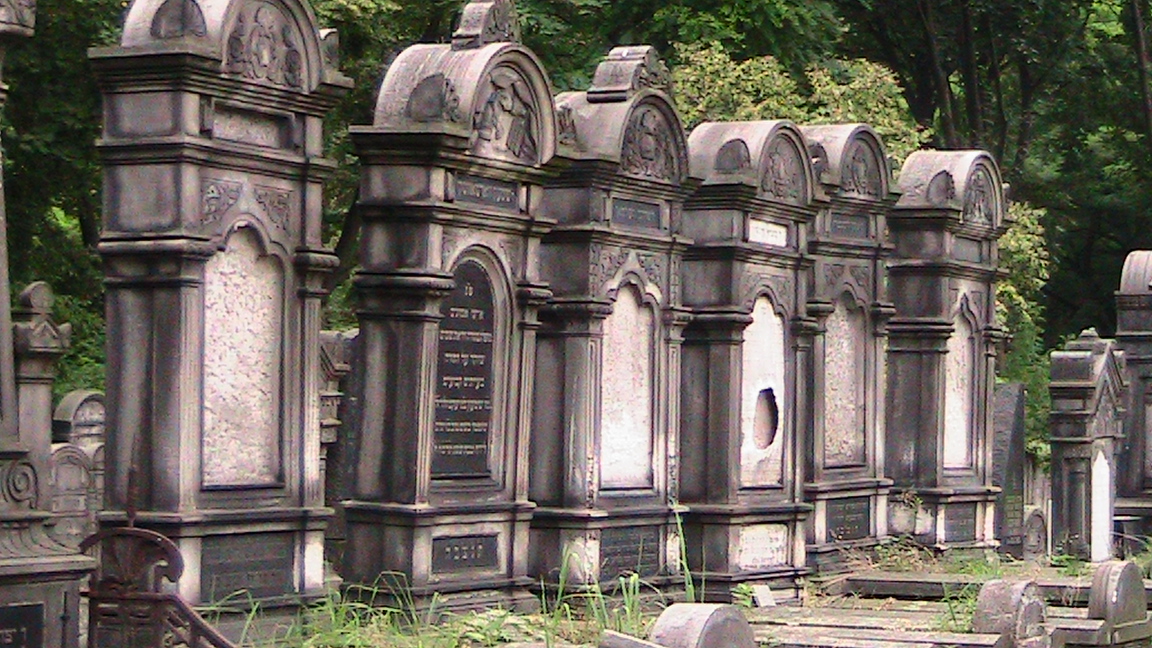  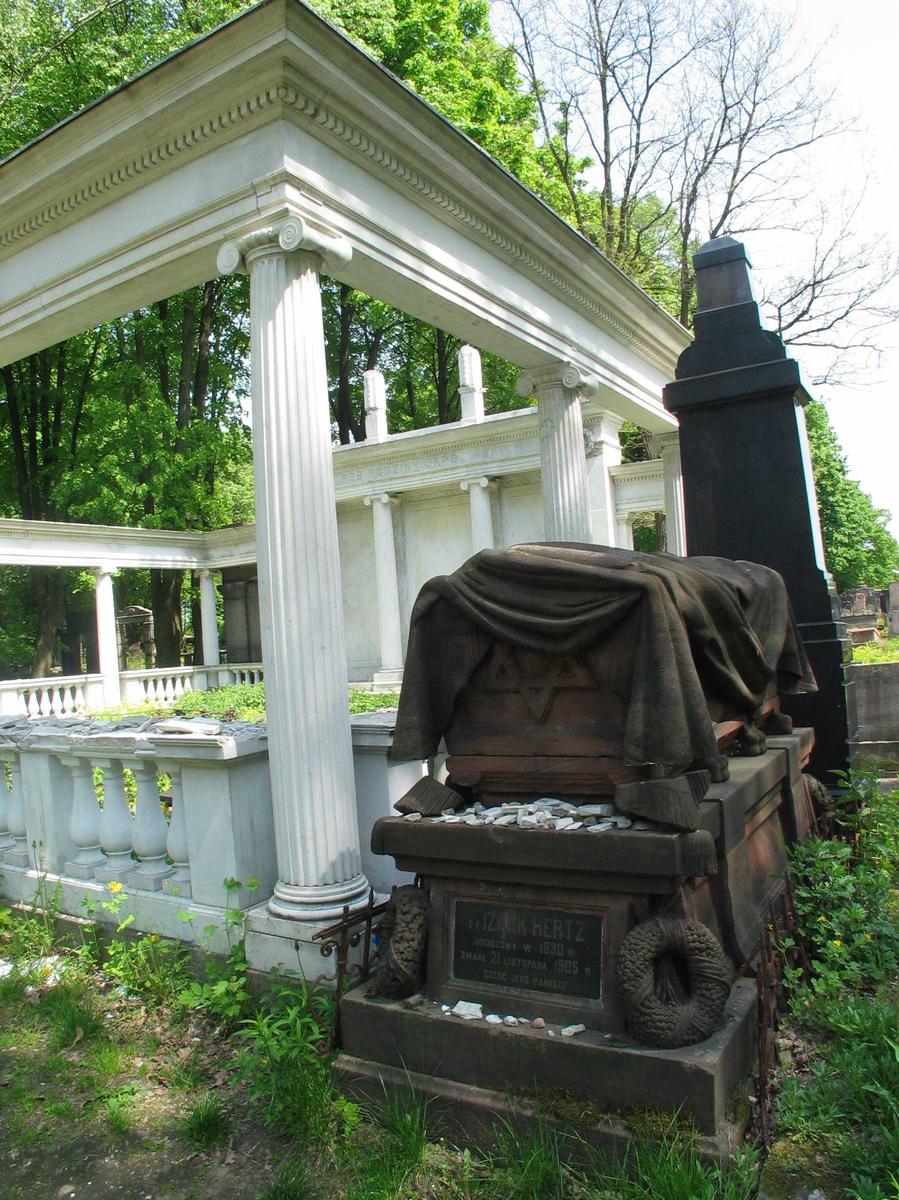 |
|